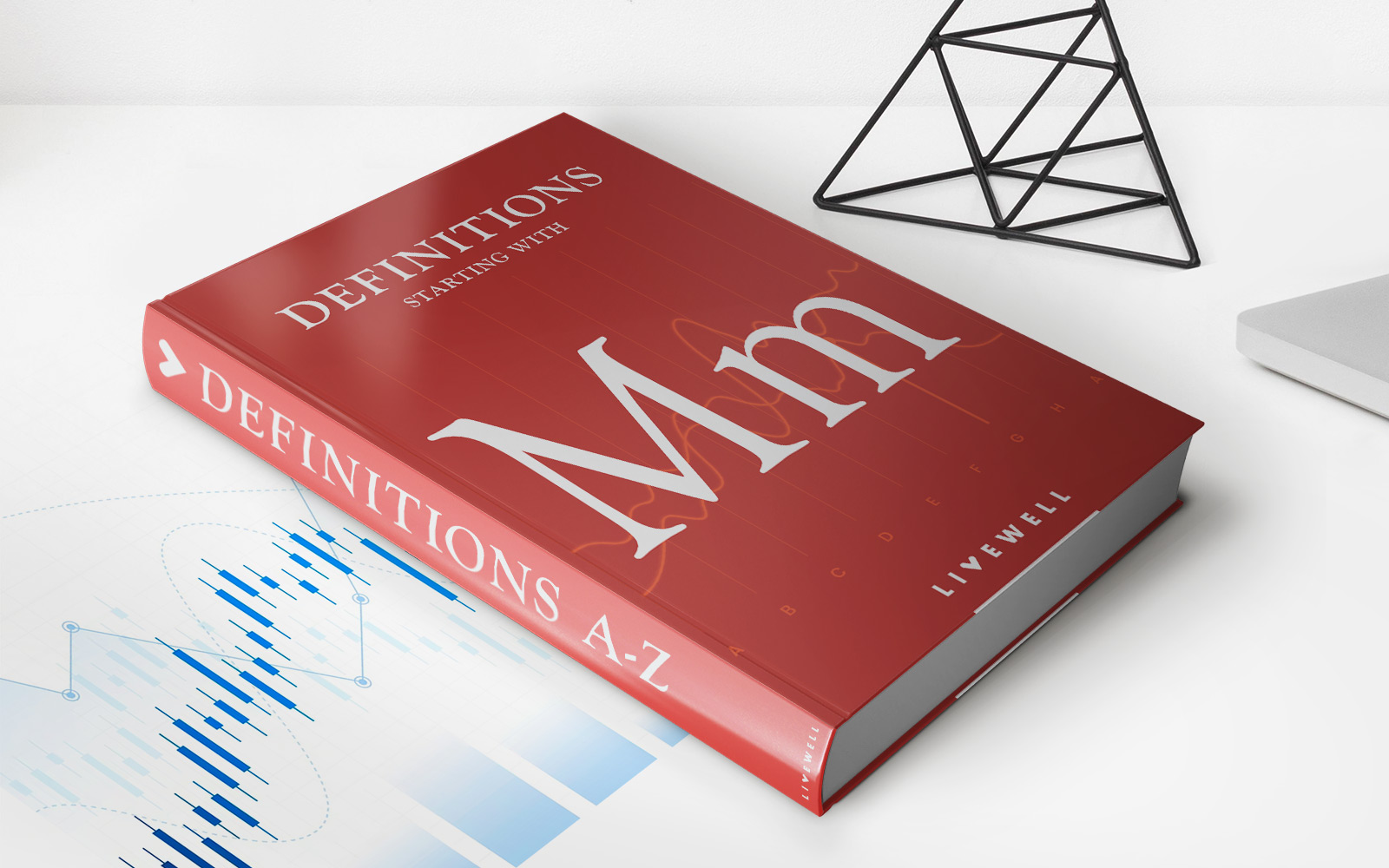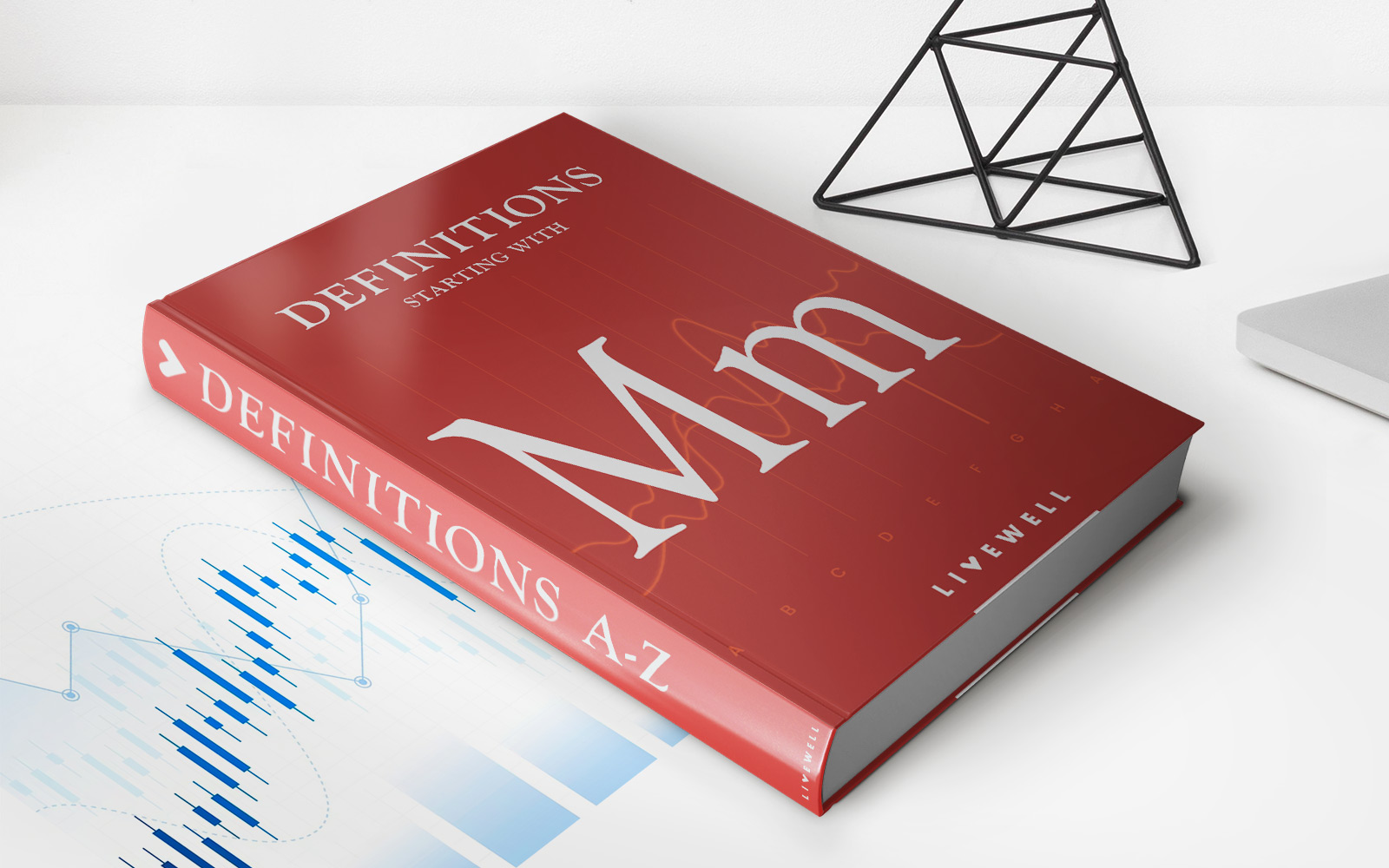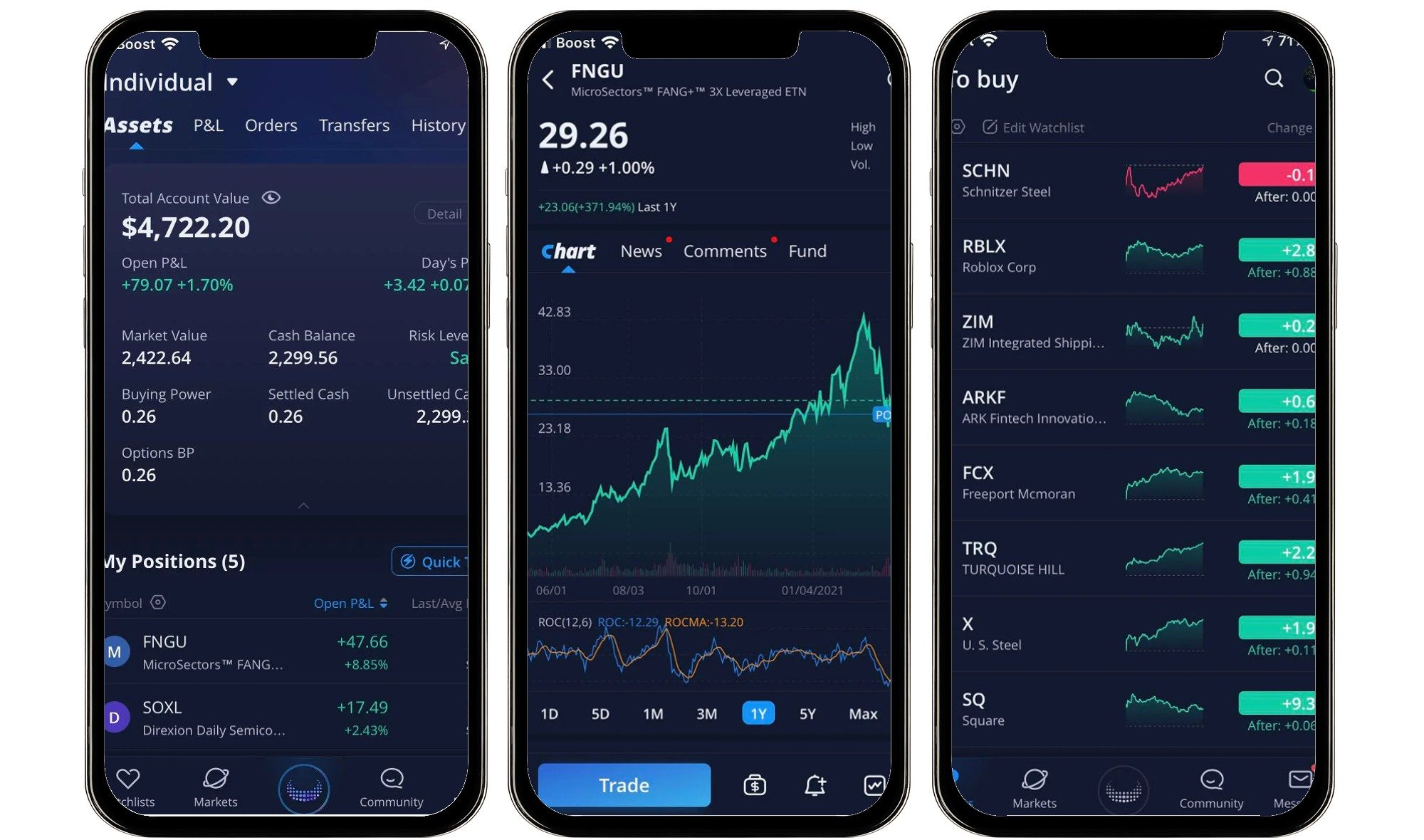

Finance
How Do Mutual Fund Dividends Work
Published: January 3, 2024
Learn how mutual fund dividends work and their impact on your finance. Understand the benefits and considerations of investing in mutual funds and receiving regular dividend payouts.
(Many of the links in this article redirect to a specific reviewed product. Your purchase of these products through affiliate links helps to generate commission for LiveWell, at no extra cost. Learn more)
Table of Contents
Introduction
When it comes to investing, mutual funds are a popular choice for many individuals. These investment vehicles provide diversification, professional management, and convenience. One of the key benefits of investing in mutual funds is the potential to earn dividends.
In this article, we will explore how mutual fund dividends work and the various factors that impact them. Understanding mutual fund dividends is essential for investors looking to maximize their returns and make informed decisions.
Before we dive into the intricacies of mutual fund dividends, let’s first establish a solid understanding of mutual funds themselves.
Mutual funds pool money from multiple investors to invest in a diversified portfolio of securities such as stocks, bonds, and money market instruments. They are managed by professional fund managers who make investment decisions based on the fund’s objectives and strategies.
Now that we have a grasp of mutual funds, let’s explore what exactly dividends are.
Understanding Mutual Funds
Mutual funds are investment vehicles that allow individual investors to pool their money together to invest in a diversified portfolio of securities. These securities can include stocks, bonds, and money market instruments. By investing in mutual funds, investors gain access to a professionally managed portfolio that offers diversification and convenience.
Here’s a closer look at some key aspects of mutual funds:
- Professional Management: Mutual funds are managed by experienced fund managers who make investment decisions on behalf of the investors. These managers have extensive knowledge and expertise in analyzing the financial markets and selecting the most appropriate investments for the fund.
- Diversification: One of the major advantages of investing in mutual funds is the ability to diversify investments across a wide range of securities. By spreading the investments across different asset classes and industries, mutual funds reduce the risk associated with investing in a single security.
- Liquidity: Mutual funds provide liquidity to investors, allowing them to buy or sell their shares at the end of each trading day at the net asset value (NAV) of the fund. This makes it easy for investors to access their money when needed.
- Transparency: Mutual funds are required by law to disclose their holdings, expenses, and performance to investors on a regular basis. This transparency enables investors to make informed decisions and monitor the performance of their investments.
- Wide Range of Investment Objectives: Mutual funds offer a variety of investment objectives to cater to the diverse needs of investors. These can range from capital appreciation to income generation, and from growth to a focus on specific sectors or regions.
Now that we have a better understanding of mutual funds, let’s delve into the concept of dividends and how they work in mutual fund investing.
What are Dividends?
Dividends are essentially a portion of a company’s profits that are distributed to its shareholders. When it comes to mutual funds, dividends are similar in concept but can be a bit more complex.
In the context of mutual funds, dividends are the distributions made by the fund to its shareholders from the income it generates. This income can come from various sources, such as the dividends received from the stocks held in the fund’s portfolio, interest earned from bonds, or capital gains from the sale of securities.
Dividends play an important role in mutual fund investing as they provide a way for investors to receive a portion of the fund’s earnings, typically in the form of cash. By earning dividends, investors can potentially supplement their income or choose to reinvest the dividends back into the fund for future growth.
It’s important to note that not all mutual funds pay dividends. Some funds, known as growth funds, focus on capital appreciation and reinvest all the income generated back into the fund, rather than distributing it to investors. On the other hand, income funds primarily aim to generate regular income for investors and tend to distribute dividends more frequently.
The timing and frequency of dividends can vary among mutual funds. Some funds may pay dividends on a quarterly or annual basis, while others may distribute dividends more frequently, such as monthly or even daily. The amount of dividend paid per share can also vary depending on the fund’s performance and the income generated.
Now that we have a basic understanding of dividends, let’s explore how mutual fund dividends work in more detail.
How Mutual Fund Dividends Work
Mutual fund dividends are typically paid out to shareholders on a regular basis. The process of how mutual fund dividends work is as follows:
- Income Generation: Mutual funds generate income from various sources, such as dividends from stocks held in the portfolio, interest from bonds, or capital gains from the sale of securities.
- Calculation of Dividend Amount: The fund’s management team calculates the total income earned by the fund during a specific period, typically quarterly or annually. They subtract any expenses and fees from this income to determine the net income available for distribution.
- Distribution Types: Mutual funds can distribute dividends in different ways. The most common types include cash dividends, reinvestment dividends, or a combination of both. Cash dividends are paid out in cash to shareholders, while reinvestment dividends are used to purchase additional shares in the fund.
- Qualified vs. Non-Qualified Dividends: Dividends from mutual funds can be classified as qualified or non-qualified, depending on certain criteria. Qualified dividends are subject to a lower tax rate, while non-qualified dividends are taxed at the individual’s ordinary income tax rate.
- Individual Shareholder Accounts: Mutual fund companies maintain individual shareholder accounts, which reflect the number of shares held by each investor. When dividends are distributed, the cash is credited to the respective shareholder’s account.
- Tax Reporting: Mutual funds provide annual tax statements to shareholders, reporting the dividends received during the year. These statements are important for tax reporting purposes and should be consulted when filing income tax returns.
It’s important to note that the amount and frequency of mutual fund dividends can fluctuate based on several factors, including market conditions, the performance of the fund, and the types of securities held in the fund’s portfolio.
Now that we understand how mutual fund dividends work, let’s take a look at the different types of mutual fund dividends that investors may encounter.
Types of Mutual Fund Dividends
When it comes to mutual fund dividends, there are different types that investors may encounter. These types reflect how the dividends are distributed and reinvested, offering investors flexibility in managing their investment returns. Here are the common types of mutual fund dividends:
- Cash Dividends: Cash dividends are the most common type of distribution in mutual funds. When a fund pays cash dividends, it distributes a portion of its income to shareholders in the form of cash. Investors have the option to either receive the cash directly or reinvest it back into the fund.
- Reinvestment Dividends: Reinvestment dividends give investors the choice to automatically reinvest the dividends back into the fund by purchasing additional shares. Instead of receiving the dividends in cash, the funds are used to buy more units or shares of the same mutual fund at the prevailing net asset value (NAV).
- Capital Gains Distributions: Capital gains distributions occur when a mutual fund sells securities within its portfolio at a profit. The resulting capital gains are distributed to shareholders. These distributions can be classified as short-term or long-term, depending on the holding period of the securities sold by the fund.
- Special Dividends: Special dividends are one-time or irregular distributions made by the mutual fund that are not part of its regular dividend policy. These dividends are typically paid out when the fund experiences significant profits or realizes gains from exceptional circumstances, such as the sale of a highly appreciated security.
It’s important for investors to understand the different types of mutual fund dividends offered by the fund in which they are investing. Each type has its own implications and may affect an investor’s overall investment strategy and tax considerations.
The specific types of dividends available in a mutual fund will be outlined in the fund’s prospectus, along with any associated rules or conditions. Investors should review the prospectus and consult with their financial advisor to ensure they fully understand the options available to them.
Now that we’ve explored the types of mutual fund dividends, let’s move on to discussing the various factors that can impact the distribution of dividends in mutual funds.
Factors Affecting Mutual Fund Dividends
Mutual fund dividends can be influenced by a variety of factors that impact the fund’s income and distribution policies. Understanding these factors is crucial for investors to assess the potential dividend payouts and make informed investment decisions. Here are the key factors that can affect mutual fund dividends:
- Portfolio Composition: The composition of a mutual fund’s portfolio plays a significant role in determining the amount and frequency of dividends. Dividends from stocks, interest from bonds, and capital gains from the sale of securities all contribute to the fund’s income. If the fund’s portfolio consists of high-dividend-paying stocks or bonds that generate regular interest income, it is more likely to distribute higher dividends.
- Market Conditions: The prevailing market conditions can impact a mutual fund’s ability to generate income and distribute dividends. Factors such as stock market volatility, interest rate fluctuations, and changes in market sentiment can influence the income generated by the fund’s portfolio. In times of economic downturn or market uncertainty, the fund’s income and subsequently its dividends may be affected.
- Expense Ratios: The expense ratio of a mutual fund, which represents the annual fees and expenses charged to investors, can impact the fund’s ability to distribute dividends. Higher expense ratios can reduce the net income available for distribution, potentially leading to lower dividend payouts. It is important for investors to consider the expense ratio when evaluating the potential income generated by a mutual fund.
- Dividend Policies: Each mutual fund has its own dividend policy, which outlines the criteria for distributing dividends. Some funds have a strict dividend payout policy, aiming to distribute a certain percentage of their income on a regular basis. Other funds may have more flexible policies, adjusting dividend distributions based on the fund’s performance and available income. Investors should review the fund’s prospectus to understand its dividend policy.
- Tax Considerations: Tax regulations and laws can impact the timing and amount of mutual fund dividends. Certain types of income, such as qualified dividends, may be subject to lower tax rates, while non-qualified dividends could be taxed at higher rates. Investors should be aware of the tax implications associated with mutual fund dividends and consult with a tax advisor to understand their individual tax situation.
It’s important for investors to research and assess these factors when considering mutual funds that offer dividends. By having a thorough understanding of the potential factors affecting dividend distributions, investors can make more informed decisions and align their investment strategies with their financial goals.
Now that we’ve discussed the factors influencing mutual fund dividends, let’s delve into the tax implications associated with receiving dividends from mutual funds.
Tax Implications of Mutual Fund Dividends
When it comes to mutual fund dividends, it’s important for investors to consider the tax implications associated with receiving these distributions. The tax treatment of mutual fund dividends can vary depending on various factors. Here’s a closer look at the key tax considerations:
Qualified vs. Non-Qualified Dividends:
Dividends from mutual funds can be classified as qualified or non-qualified, depending on specific criteria set by the Internal Revenue Service (IRS). Qualified dividends are subject to a lower tax rate, similar to long-term capital gains rates. To qualify for this lower rate, the dividends must meet certain holding period requirements for the underlying securities.
Non-qualified dividends, on the other hand, are taxed at an individual’s ordinary income tax rates. These rates are generally higher than the rates for qualified dividends and may vary depending on an individual’s tax bracket.
Taxation of Reinvestment Dividends:
When investors choose to reinvest their dividends back into the mutual fund, those reinvested dividends are generally still considered taxable income, just like receiving the dividends in cash. Even though investors don’t receive the cash, they are still liable for the taxes on the dividend income, as if they had received it in cash and then reinvested it.
Forms 1099-DIV:
Mutual fund companies are required to provide shareholders with Form 1099-DIV, which reports the dividends received during the tax year. This form provides important information for tax reporting purposes, including the breakdown of qualified and non-qualified dividends, as well as any capital gains distributions.
Tax-Advantaged Accounts:
Investing in mutual funds through tax-advantaged accounts, such as individual retirement accounts (IRAs) or 401(k)s, can offer potential tax benefits. Dividends earned in these accounts are not subject to immediate taxation, allowing for potential tax-deferred or tax-free growth, depending on the specific account type and contributions.
It is important for investors to consult with a tax advisor or accountant to understand the specific tax implications of receiving mutual fund dividends based on their individual circumstances. They can provide guidance on tax planning strategies and help ensure compliance with tax regulations.
Now that we have explored the tax implications, let’s discuss the option of reinvesting dividends in mutual funds.
Reinvesting Dividends in Mutual Funds
When investors receive dividends from mutual funds, they have the option to either receive the dividends in cash or reinvest them back into the fund. Reinvesting dividends is a popular choice among investors as it allows for potential compounding growth and can be an effective long-term investment strategy. Here are some key points to consider regarding reinvesting dividends in mutual funds:
Automatic Reinvestment:
Many mutual funds offer an automatic reinvestment option, where dividends are automatically reinvested into the fund without the need for manual intervention. This option can be beneficial as it takes advantage of dollar-cost averaging, which means purchasing additional fund shares at different price points over time. By reinvesting dividends automatically, investors can potentially increase their overall investment value as well as the number of shares held in the fund.
Compounding Growth:
Reinvesting dividends allows for compounding growth to occur. This occurs when the reinvested dividends generate additional dividend income in subsequent periods. Over time, compounded growth can significantly enhance the overall investment returns. By reinvesting dividends, investors can harness the power of compounding to potentially accelerate their wealth accumulation.
Long-Term Investment Strategy:
Reinvesting dividends is often part of a long-term investment strategy. By reinvesting, investors can take advantage of the power of compounding over extended periods, allowing their investments to potentially grow significantly over time. This strategy aligns with a buy-and-hold approach, as investors aim to stay invested in the fund for the long term, making regular contributions and reinvesting dividends to maximize their growth potential.
Tax Considerations:
Reinvested dividends are still subject to taxation, even though they are not received in cash. This means that investors may owe taxes on the reinvested dividends, even though they did not have access to the funds. It’s important for investors to consult with a tax advisor or accountant to understand the tax implications of reinvesting dividends in mutual funds based on their individual circumstances.
Reinvesting dividends can be a powerful tool for long-term wealth accumulation. It allows investors to potentially benefit from compounding growth and aligns with a buy-and-hold investment strategy. However, investors should carefully consider their investment objectives and consult with a financial advisor to ensure that reinvesting dividends aligns with their overall financial goals.
Now that we’ve covered the option of reinvesting dividends, let’s discuss the importance of researching mutual fund dividends before investing.
Importance of Researching Mutual Fund Dividends
Researching mutual fund dividends is an essential step for investors looking to maximize their investment returns and make informed decisions. The dividends offered by a mutual fund can have a significant impact on an investor’s overall investment strategy and goals. Here are several reasons why researching mutual fund dividends is of utmost importance:
Income Potential:
Dividends play a crucial role in generating income from a mutual fund investment. By researching the historical dividend payments of a fund, investors can assess the income potential of the fund and determine if it aligns with their income requirements. This research allows investors to identify funds with a strong track record of consistent and reliable dividend payments.
Dividend Sustainability:
Researching a mutual fund’s dividends can provide insights into the sustainability of those dividends. It helps investors understand if a fund’s dividend payments are supported by the underlying securities, such as dividend-paying stocks or interest-generating bonds. By evaluating the fund’s holdings and analyzing its dividend history, investors can better gauge the likelihood of continued dividend payments in the future.
Comparative Analysis:
Researching mutual fund dividends allows investors to compare different funds and select the one that best suits their investment goals. By examining the dividend yields of various funds within the same investment category, investors can identify funds that offer attractive dividend payouts relative to their peers. This comparative analysis can help investors make more informed investment decisions based on their specific income needs and growth objectives.
Tax Planning:
Researching mutual fund dividends also helps investors with tax planning. By understanding the tax implications associated with different types of dividends, such as qualified and non-qualified dividends, investors can optimize their tax strategy. They can evaluate the tax efficiency of different funds and select those that offer favorable tax treatment based on their individual circumstances.
Performance Evaluation:
The dividend history of a mutual fund can serve as a performance indicator. Researching the consistency and growth of dividend payments over time can provide insights into the fund’s financial health and management’s ability to generate income. A track record of increasing dividends can be a positive sign, indicating that the fund has been able to generate consistent returns and effectively manage its income-generating assets.
Risk Assessment:
Researching mutual fund dividends can also aid in assessing the investment risk associated with a particular fund. Funds that offer high dividend yields may be considered riskier, as they might be investing in securities with higher levels of volatility or lower credit quality. Understanding the risk-return profile of a fund’s dividend payments is crucial for investors to align their investment choices with their risk tolerance and overall investment strategy.
By researching mutual fund dividends, investors can gain a deeper understanding of the income potential, sustainability, tax implications, and risk factors associated with different funds. This research equips investors with the necessary knowledge to make educated investment decisions that align with their financial goals and objectives.
Now that we have emphasized the importance of researching mutual fund dividends, let’s wrap up our discussion.
Conclusion
Mutual fund dividends are an important aspect of investing that provides income potential and can significantly impact an investor’s overall returns. Understanding how mutual fund dividends work and conducting thorough research is crucial for investors looking to make informed decisions and maximize the benefits of dividend investing.
We began by outlining the basics of mutual funds and their benefits, establishing a foundation for understanding mutual fund dividends. We then delved into the concept of dividends and explored the various types of dividends that investors may encounter, such as cash dividends, reinvestment dividends, and capital gains distributions.
We discussed how mutual fund dividends are calculated and distributed to shareholders, highlighting the factors that can affect the amount and frequency of dividend payments. These factors include portfolio composition, market conditions, expense ratios, dividend policies, and tax considerations.
Tax implications play a significant role when it comes to mutual fund dividends. Investors need to be aware of whether dividends are qualified or non-qualified and understand how reinvesting dividends can impact their tax obligations. Consulting with a tax advisor is essential to navigate the complex tax landscape and optimize tax planning strategies.
Furthermore, we emphasized the importance of researching mutual fund dividends before making investment decisions. Conducting thorough research allows investors to assess income potential, dividend sustainability, comparative analysis, tax planning, and performance evaluation. It also aids in risk assessment, helping investors align their investment choices with their risk tolerance and overall investment strategy.
In conclusion, mutual fund dividends offer investors an opportunity to generate income and potentially enhance their investment returns. By gaining a solid understanding of mutual fund dividends, conducting research, and considering tax implications, investors can make informed decisions that align with their financial goals and objectives.
Remember, investing in mutual funds involves risks, and it’s important to carefully read the fund’s prospectus and consult with a financial advisor before making any investment decisions.














